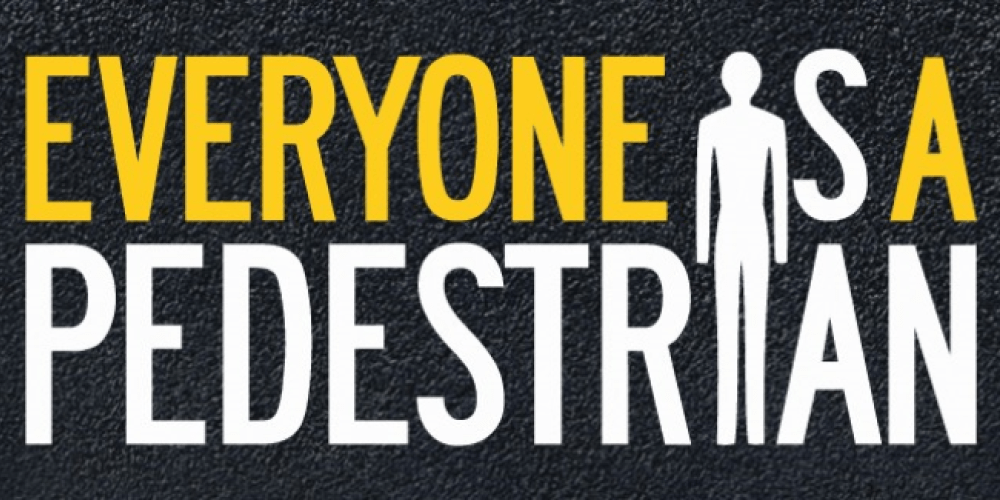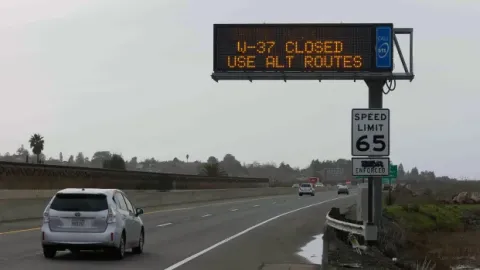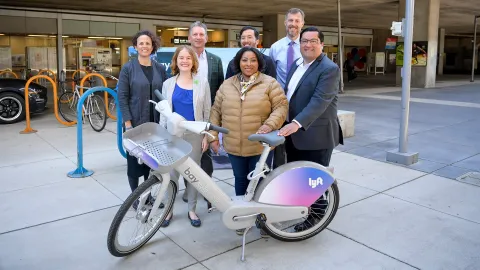
A few weeks ago we highlighted how the Bay Area has experienced a recent sharp upward trend in fatalities and injuries from roadway crashes, and that bicyclists and pedestrian were bearing the brunt of these unwelcome developments. A new report from the Governors Highway Safety Association (GHSA) suggests growing dangers for pedestrians are not just a Bay Area issue: in both relative and absolute terms, pedestrian deaths nationwide are at levels not seen in decades.
The report, Pedestrian Traffic Fatalities By State: 2017 Preliminary Data, contains a host of alarming findings about conditions for pedestrians across the country (emphasis added in bold):
- The nationwide number of pedestrian fatalities increased 27 percent from 2007 to 2016, while all other traffic fatalities over this period decreased by 14 percent.
- Pedestrian deaths as a percent of total motor vehicle crash deaths increased steadily, from 11 percent in 2007 to 16 percent in 2016. Pedestrians now account for the largest proportion of traffic fatalities during the past 33 years.
- The number of states with pedestrian fatality rates at or above 2.0 per 100,000 population more than doubled from seven in 2014 to 15 in 2016.
- From 2015 to 2016, pedestrian fatalities in the nation’s 10 most populous cities increased 28 percent (153 additional fatalities).
- … 2017 is … on par to become the second consecutive year with nearly 6,000 pedestrian deaths. The last time the U.S. saw more than 6,000 pedestrian deaths was 1990.
What’s going on here? Why are conditions seemingly getting so much worse for our nation's pedestrians? The authors of the report are careful not to draw a direct, causal link, but they highlight two specific areas in need of additional, careful examination: 1.) The increasing prevalence of decriminalized recreational marijuana, and 2.) Smartphones. It’s believed the aforementioned factors could be leading to impaired judgement, delayed reaction time and general distraction, for both drivers and pedestrians. The report continues:
- The seven states (Alaska, Colorado, Maine, Massachusetts, Nevada, Oregon, Washington) and DC that legalized recreational use of marijuana between 2012 and 2016 reported a collective 16.4 percent increase in pedestrian fatalities for the first six months of 2017 versus the first six months of 2016, whereas all other states reported a collective 5.8 percent decrease in pedestrian fatalities.
- With regard to cellphone use, the reported number of smartphones in active use in the U.S. increased by 236 percent from 2010 to 2016, and the annual number of multimedia messages over this period more than tripled. Analysis of data from the National Electronic Injury Surveillance database shows the number of cell-phone related Emergency Department visits is increasing in parallel with the prevalence of cell phone use in the United States.
Of course, there are a lot of other factors potentially involved here, including the growing economy leading to more driving, increasing populations in big cities, increasing congestion, and so on. However, as one of the study authors noted in an interview with the New York Times, the data “is a marker for concern… It may be a canary in a coal mine, an early indicator to address.”
Closer to home, we mentioned in our last piece how progress on road safety has been made in cities that have adopted Vision Zero programs that seek to eliminate traffic fatalities through analysis, engineering, enforcement and public-safety initiatives. In December, MTC also agreed to support a statewide goal of achieving a significant reduction in fatalities and serious injuries on all public roads and public transportation systems by 2030.
As can be seen here, Caltrans is getting in on the act too:
Expect to see more education and interventions like this at the state, regional and local level in the years ahead, as the collective project of making our roadways safer for everyone gathers steam.



Submit your comment
In order to receive a reply to your comment, please provide an email address.